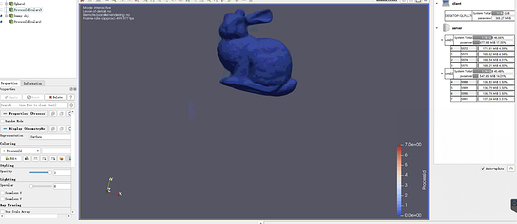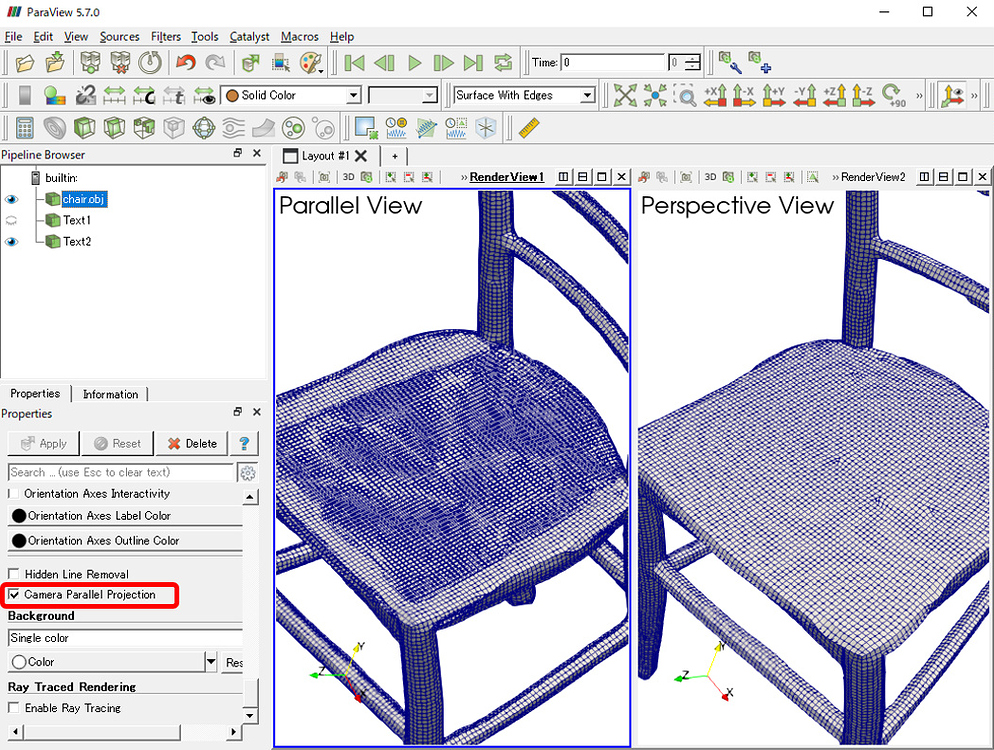
- #Paraview parallel rendering pdf
- #Paraview parallel rendering manual
- #Paraview parallel rendering software
- #Paraview parallel rendering windows
Last but not least, you can work with 3D widgets (e.g. Several tools are implemented in the program for helping you create a custom filter, add camera link, manage plugins, record and play a test, open up the Python shell, as well as import macros from Python scripts. Additionally, you can make the app display them in an alphabetical order. Calculator, Slice, Clip, Contour, Threshold), Data Analysis, Material Analysis, Quadrature Points, Statistics, and Temporal.

You can choose between a wide range of filters that you can apply to your data, and there are organized in different categories, namely AMR, CTH, Common (e.g. There are many objects that you can place in the working environment, such as 2D glyph, 3D text, arrow, axes, box, cone, cylinder, disk, hierarchical fractal, line, plane, ruler, sphere, and hyper tree grid. The statistics inspector reveals details about the memory used by every pipeline filter or source, while the memory inspector gives you the power to keep an eye on ParaView’s memory usage during interactive visualization through direct queries to the operating system. The tool reveals several handy features in the Information panel, namely file properties, data statistics (type, number of cells and points, memory), array data (association, name, type and range of each array in the dataset), bounds (coordinates and dimensions), timesteps (index and value of all time steps available in a file), extents (only for structured datasets), as well as data hierarchy for AMR and multi-block datasets. General information, statistics and memory inspector
#Paraview parallel rendering pdf
You can take screenshots and save them to PNG, BMP, JPG, PDF or other file format, export the current scene to EPS, PDF, PS, SVG or POV file format, save animation to OVG, PNG or AVI, as well as export geometry to PVD. ParaView is able to read data from a comprehensive number of file formats, such as INP, CML, CSV, TXT, DEM, DCM, FLASH, NCD, VTK, RES, OBJ, XYZ, DAT, PHT, SAR, RAW, DUMP, JPG, VRT and WIND. The Properties panel enables you to tweak any given module within the pipeline and the View area is displayed in one or more windows.
#Paraview parallel rendering manual
It integrates a multitude of dedicated parameters and configuration settings, so reading the help manual and experimenting with the built-in features can get you out of trouble.įile and Filter menus give you the possibility to open files and manipulate data, while the Pipeline browser is used for revealing the pipeline visualization. The tool sports a clean and user-friendly layout with well-organized commands in the main window so you can quickly process data. Datasets consist of mesh (topology and geometry) and attributes. The utility uses the Visualization ToolKit (VTK) libraries where data objects can be scientific datasets (rectilinear grids or finite element meshes) or abstract data structures such as graphs or trees. The analysis of large datasets is done via distributed memory computing resources. In order to visualize your data three steps need to be followed: reading, filtering and rendering. Processing scientific dataĭuring a visualization process the program takes raw data and converts it to an understandable format in 2D or 3D space, more specifically a visualization pipeline.
#Paraview parallel rendering software
The rendered field is nut.įor more detailed information refer to the nerdier official ParaView Wiki.ParaView is an open-source software application that makes use of qualitative and quantitative techniques in order to explore large sets of data in an interactive 3D environment or programmatically using scripting and batch processing capabilities. Here’s a big big domain rendered on all my cores: Pump case with 6 million cells, rendered with Paraview, on multiple cores. You must use CopyStructure before calling this method. Otherwise you will get the error: Structure does not match. Now you can open a case as usual but you must read the decomposed times. Now you open ParaView and instead of opening a file directly, you connect to your server: File > Connect… If you haven’t done it yet, Add Server: Name: your choice C:\Program Files\ParaView\bin>mpiexec -np 4 pvserver In my case, I decompose my cases into 4 subdomains.
#Paraview parallel rendering windows
Also, on Windows Microsoft MPI is run with mpiexec, on Linux mpirun. The number of MPI processes should be equal to number of decomposed subdomains of the OpenFOAM case you will open. So you need to run a server first but with MPI. ParaView itself can’t render on multiple cores. So here’s a quick’n’dirty tutorial for dummies. Rendering results in ParaView on multiple cores on a desktop computer is a little less explained on the light side of the internets.

Using OpenFOAM in parallel with MPI is well explained in the OpenFOAM manual.


 0 kommentar(er)
0 kommentar(er)
